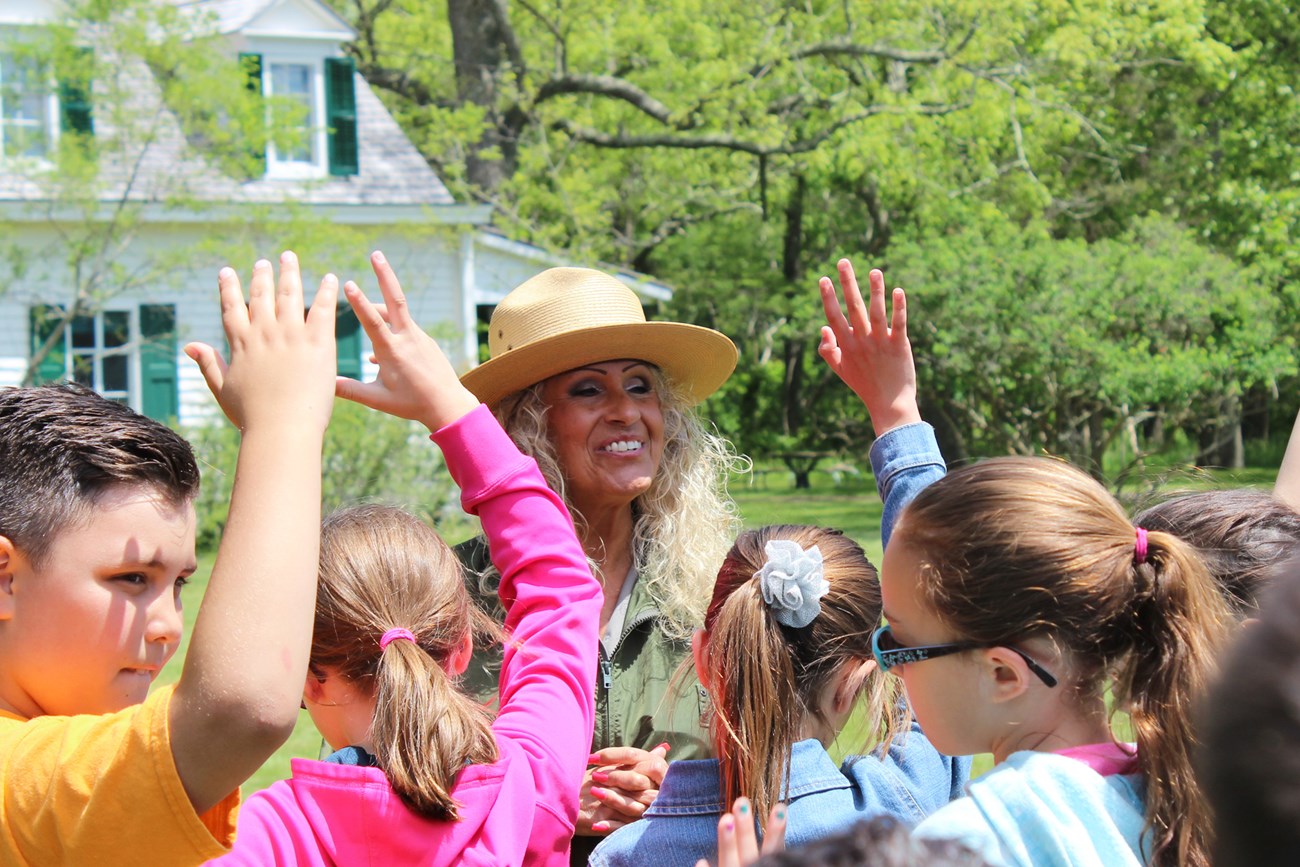
Start Here: Educator's Resource GuideLooking for tips on planning a field trip? Want background on Fire Island's history or ecology? Need a standards-aligned lesson plan? We've got you covered. Fire Island National Seashore's Educator's Resource Guide was designed with teachers in mind to help you incorporate the natural and cultural features found on Fire Island and at the William Floyd Estate into classroom and field trip learning experiences. Free Fire Island ActivitiesPlease e-mail us for a copy of the following lesson plans: Understanding Adaptation Grades: 3–5 An adaptation is a specialized characteristic that a plant or animal has that enables it to survive in the environment. In this lesson, students explore adaptation by observing barrier island plants and animals as they walk from ocean to bay on Fire Island. The pre-visit classroom lesson (40 minutes) introduces students to the concept with an activity identifying adaptations of common plants and animals. While visiting Fire Island (2 hours), students explore the different habitats and complete a worksheet, documenting the plants and animals and how they are adapted to the conditions there. During the post-visit classroom activity (40 minutes), students work in groups to create a fantasy creature that will be successful in a barrier island habitat. The Wind, Waves, and Wide Open Sea Grades: 5–12 This 45-minute on-site activity measures wind and wave conditions which are the fundamental forces that shape the beach. These parameters allow us to monitor and predict shoreline change and to understand the dynamic nature of barrier islands. In groups of four, students collect and record data and observations on the beaches of Fire Island. The groups then synthesize the data and discuss the relevance of the data collected. Shape-Shifting Shoreline Grades: 8–12, Earth Science This activity explores the slope and shape of the beach using surveyor’s profile equipment. Understanding these parameters and how they change through time is important to defining sustainability in a dynamic coastal environment. Students work in teams of five to measure the elevation of the beach along a transect. Data collected is then processed, graphed and the significance discussed by the students. Sorting Sand Grades: 8–12, Earth Science This lesson consists of two simultaneous activities that examine sand properties on the beach of Fire Island. Students work in two teams of three to study sand grain composition and distribution at different locations on the beach. After the activities, the teams come together to share and synthesize data and to discuss the relevance of the data collected. An understanding of sand composition and distribution is fundamental to understanding barrier island dynamics. Understanding Succession Grades: 9–12, Biology and Environmental Studies Ecological succession is a process in which an ecological community changes over time. In this lesson, students have the opportunity to observe ecological succession by observing and identifying plants as they walk from the ocean, through the swale and maritime forest, to the bay at Sailors Haven on Fire Island. Students first learn about the different types of succession in the classroom and label a cross-section “map” of the Fire Island (40 minutes). While visiting Sailors Haven, students work in groups of two or three, identify plants and answer questions as they walk from the ocean to the bay (2 hours). During the post-visit classroom lesson (40 minutes), student groups work together to create a class version of the map, labeling the various plants and where they are located on Fire Island. In addition, students review some of the wildlife found on Fire Island. Specifically, students learn about the impact white-tailed deer are having on the island’s maritime forests as well as the rest of Fire Island National Seashore. Considering Climate Change: Fire Island and Storms Grades: 9–12, Biology and Environmental Studies The main focus of this lesson is that of an inquiry-based dissolved oxygen lab in which students create their own algal blooms and measure dissolved oxygen (DO) levels in sample of water containing various salinities and temperatures. Prior to the lab, students learn about barrier island dynamics on Fire Island through a PowerPoint presentation and video. The PowerPoint also contains information about global warming and climate change, with a focus on Hurricane Sandy. Accompanying homework (with answer key) helps teachers assess the knowledge of their students at the end of each presentation. At the conclusion of the lab, students learn about the breach that occurred in the Fire Island Wilderness as a result of Hurricane Sandy. Students learn about the controversy over closing of the breach by engaging in a reading of an article and with an optional field trip to the breach. |
Last updated: October 28, 2020
